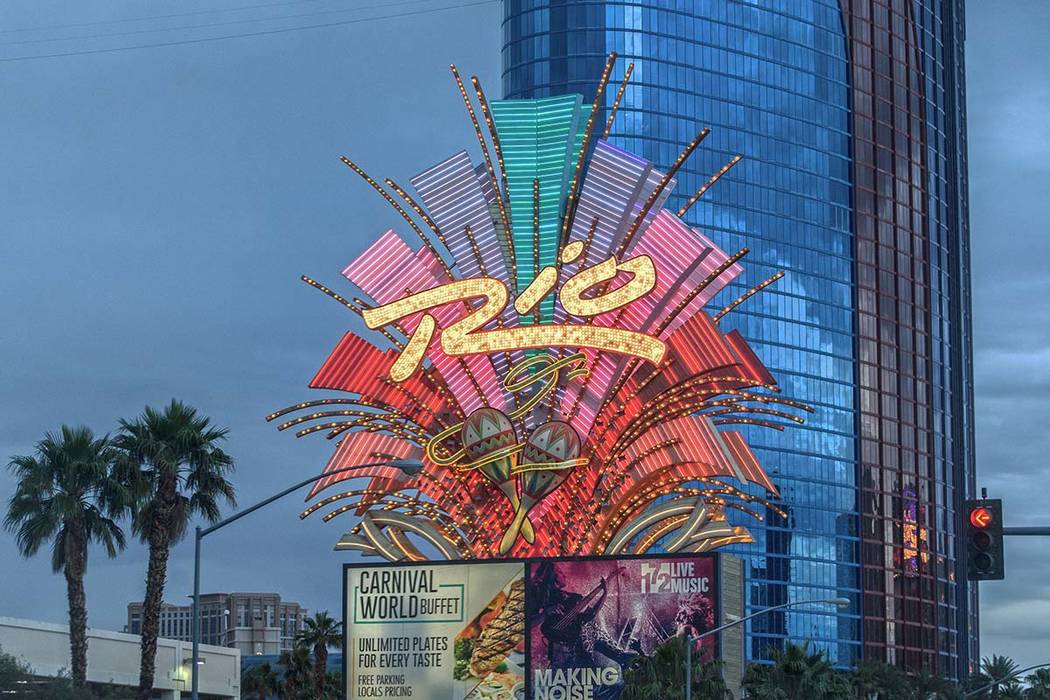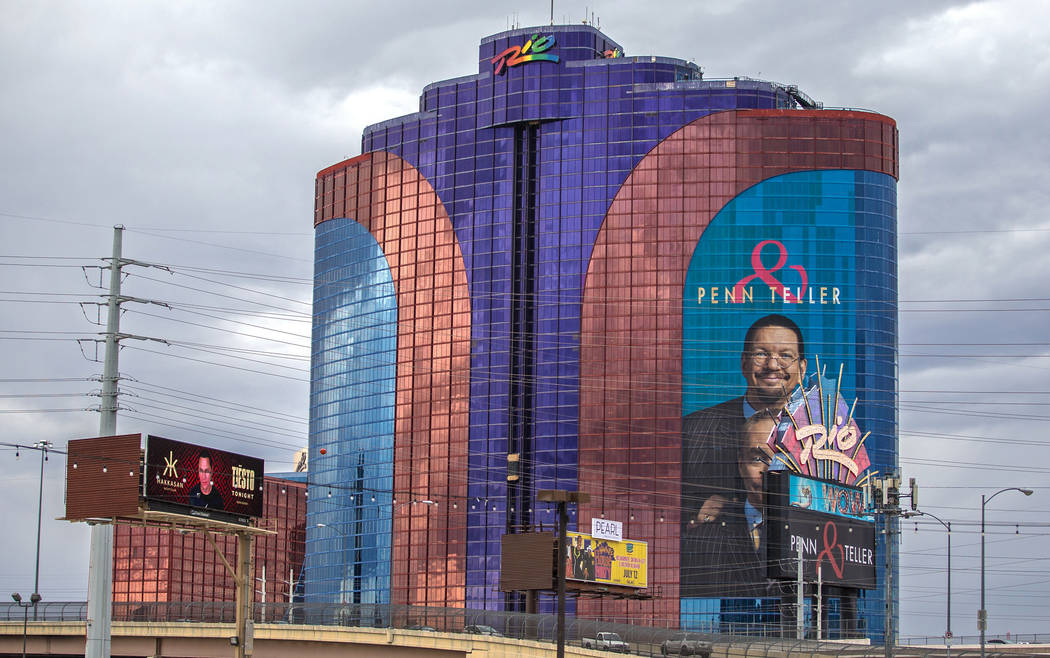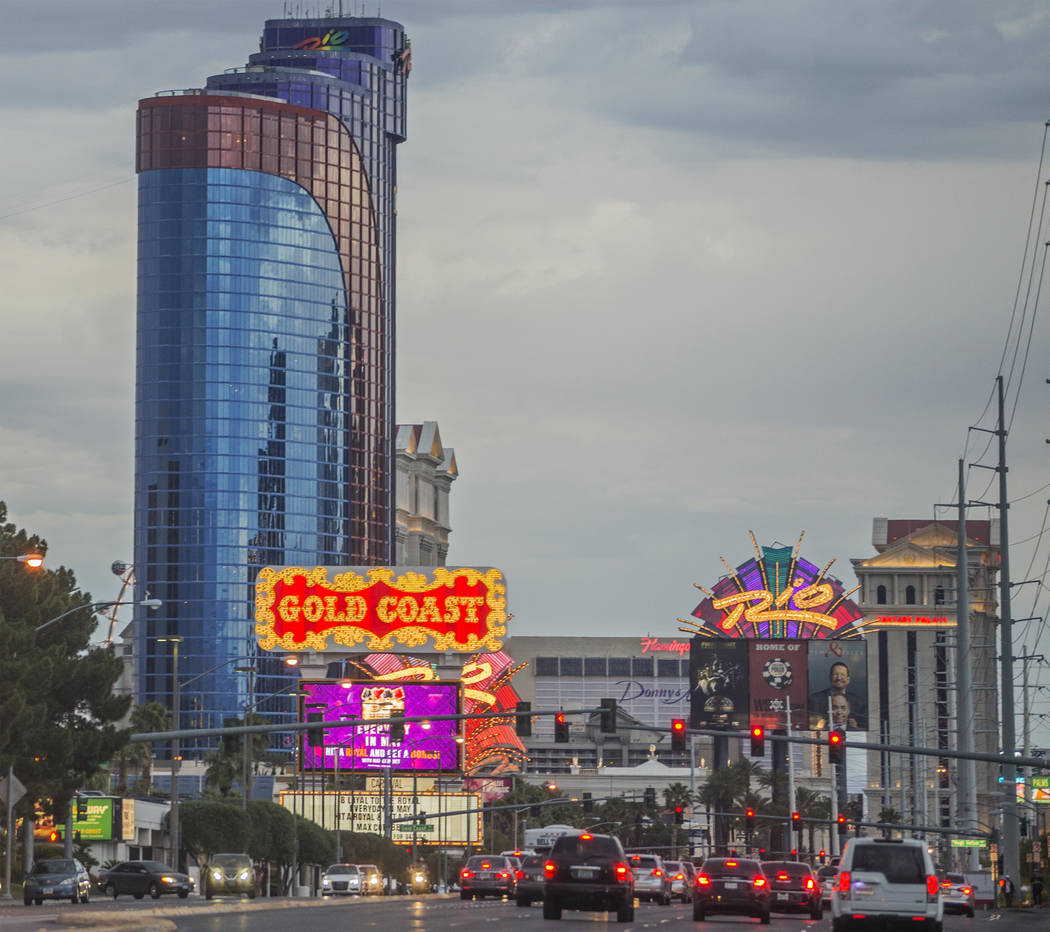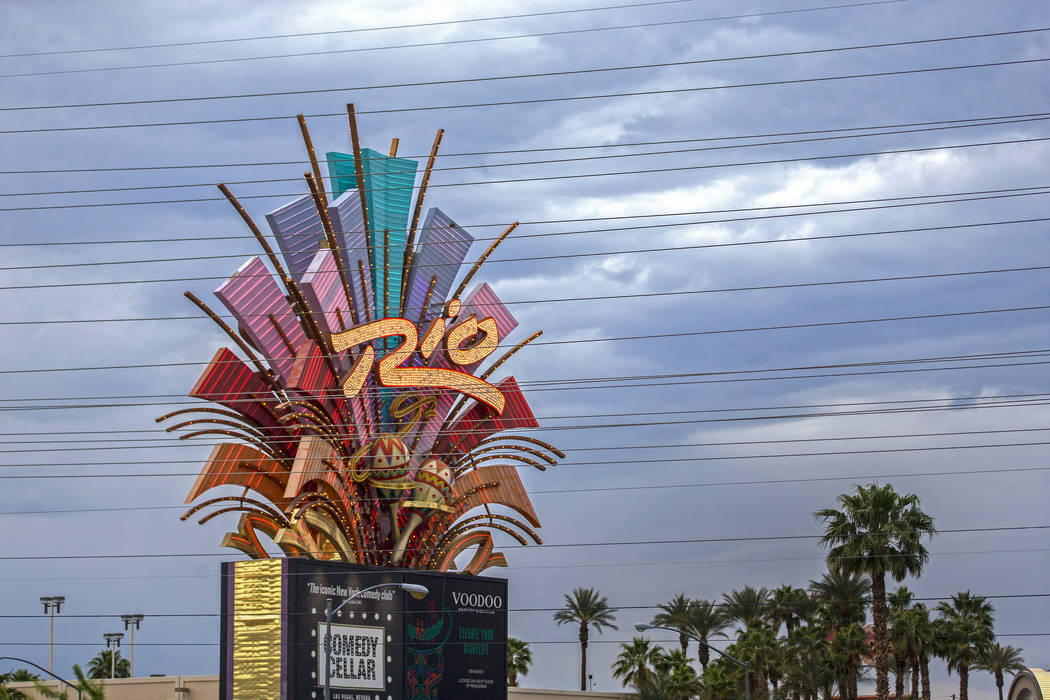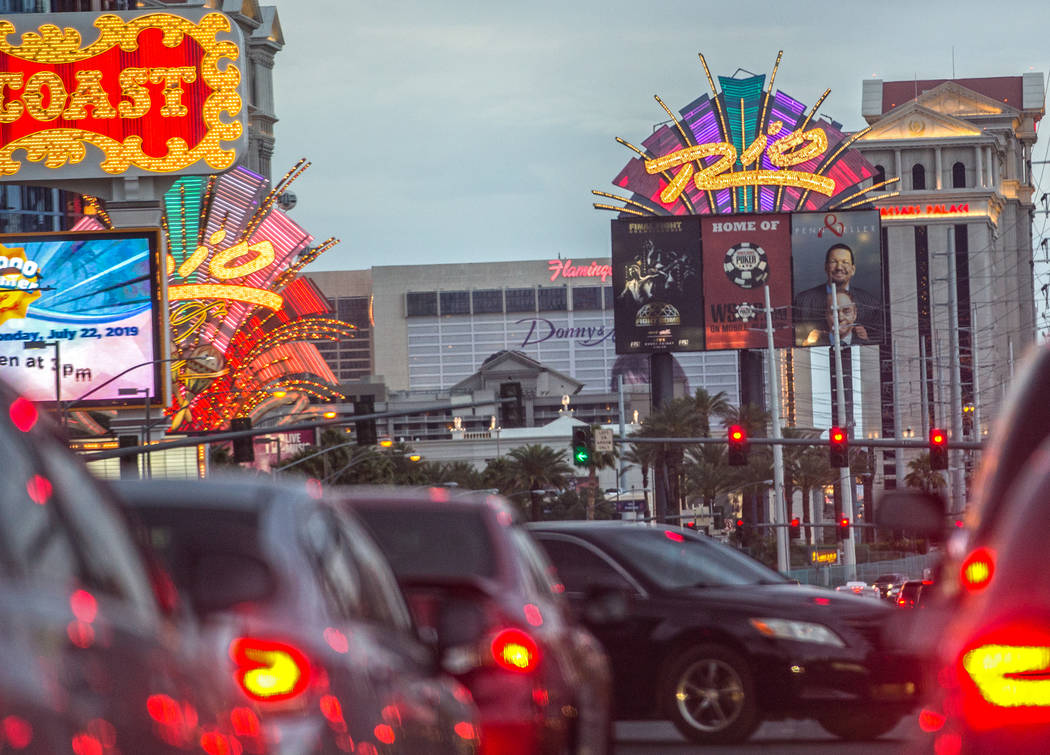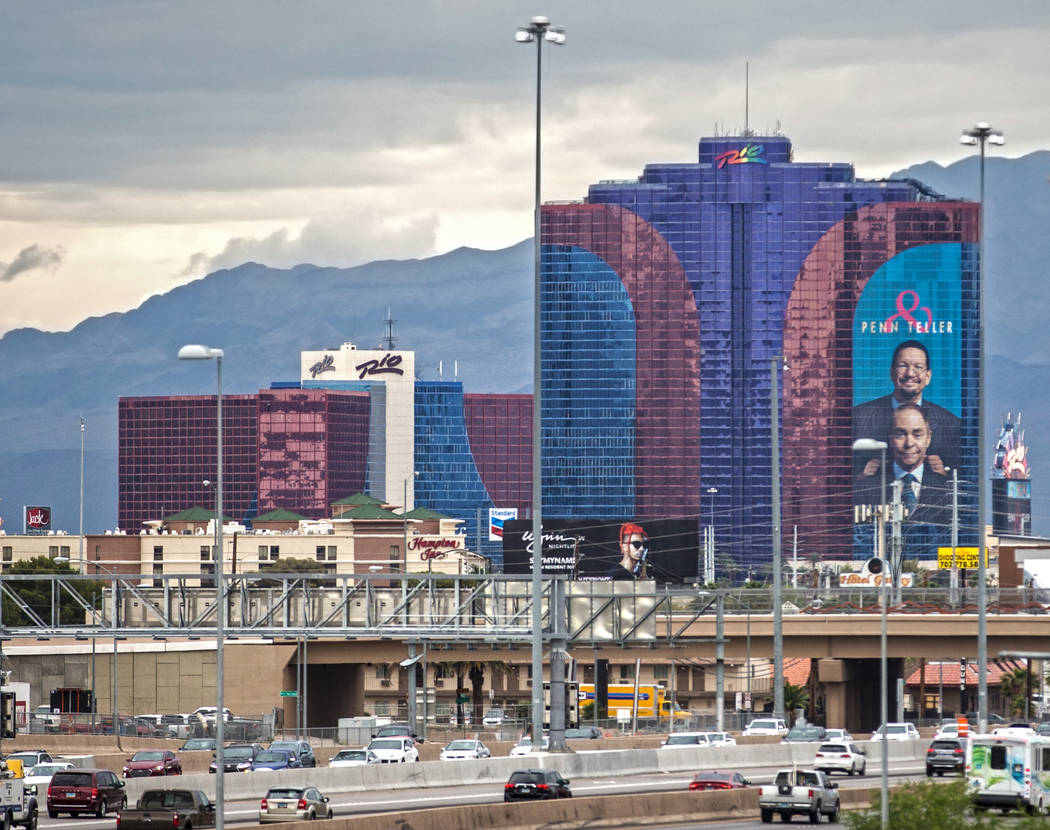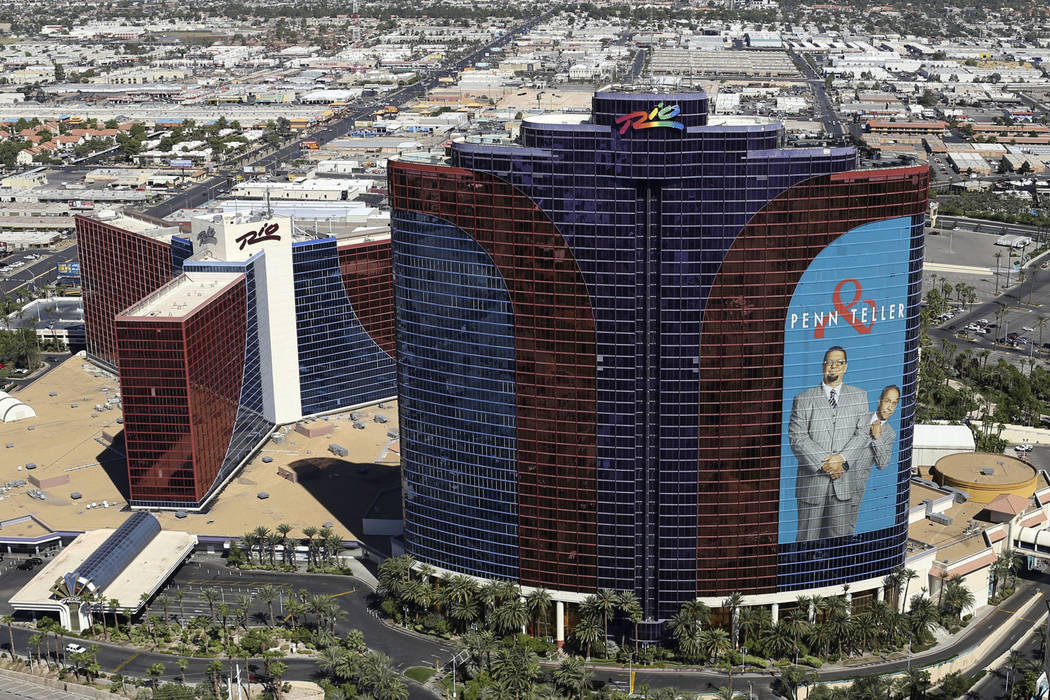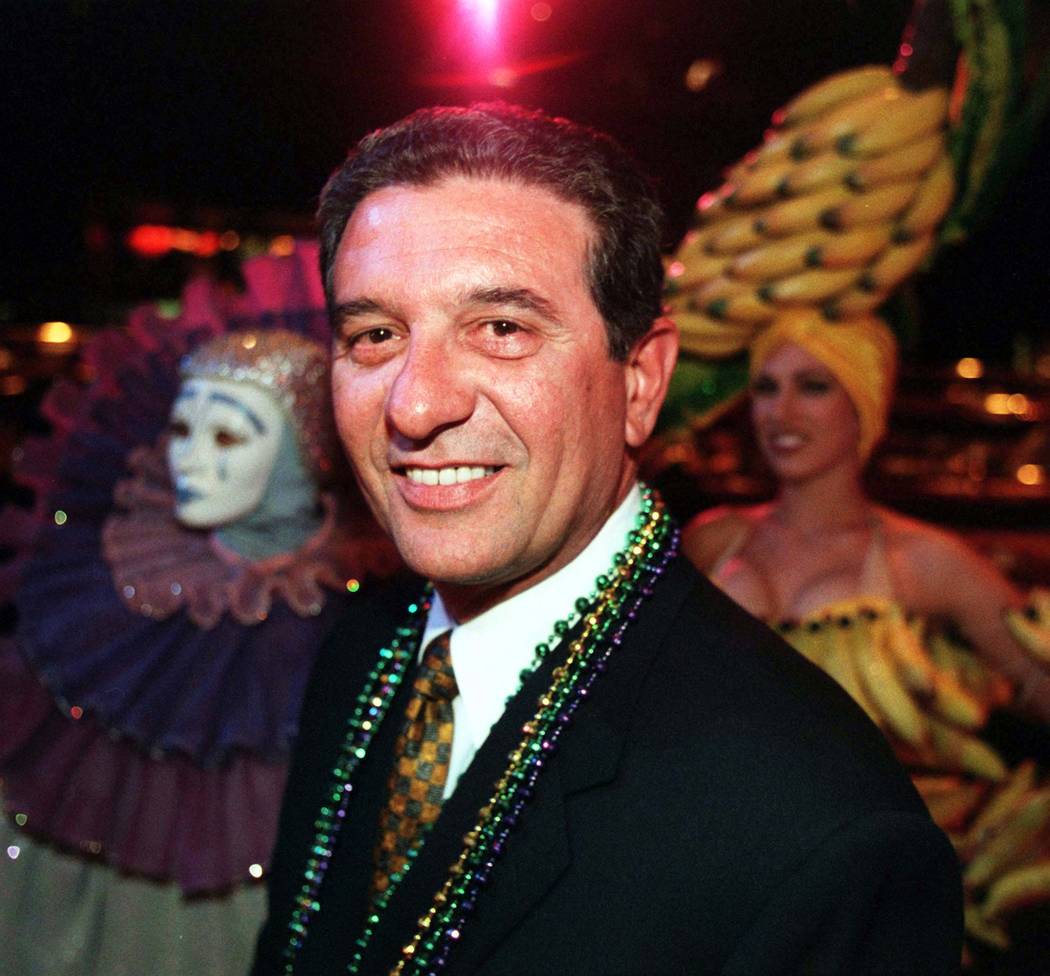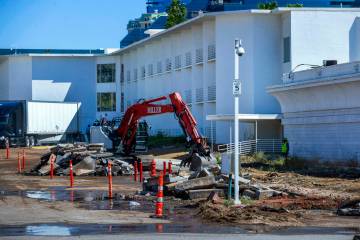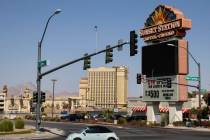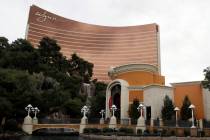After 30 years, Rio in Las Vegas is losing its status and shine
Nearly 30 years after the Rio opened, the red and blue jewel that helped catapult Las Vegas to a new level with its buffet and nightclub has lost its status along with its shine.
Once vying for high-rollers with top Strip properties like Caesars Palace and The Mirage, it now competes with 50-year-old Circus Circus for cost-conscious visitors, enticing them with suite deals before fees as low as $32 a night.
“The Rio needs a little TLC and it hasn’t gotten a dime’s worth,” said Rio founder Tony Marnell, who sold the Brazil-themed resort in 1999 to Harrah’s Entertainment, now known as Caesars Entertainment Corp.
By the end of next year, Caesars will have spent well more than $600 million since 2014 to upgrade nearly 90 percent of its 25,000 Las Vegas rooms. 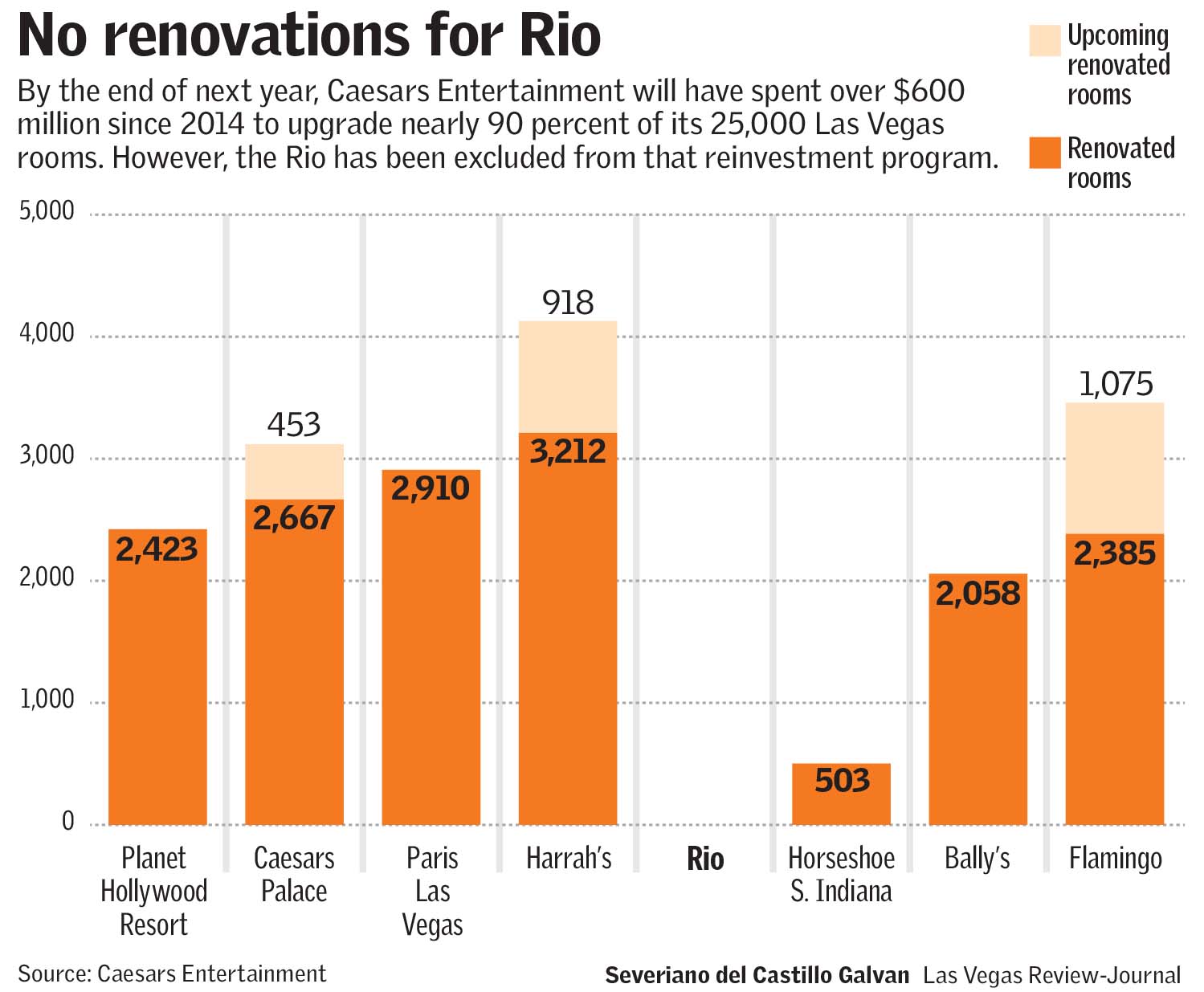
But the Rio, Caesars’ only off-Strip property, is excluded from that reinvestment program, according to company presentations to investors.
The Rio has been rumored to be for sale for about a decade, and property owners generally halt new major reinvestments when they put a property up for sale.
Caesars representatives declined to comment on the Rio and its future, or provide any financial and renovation information for the property.
The Rio may be worth between $636 million and $836 million, according to a valuation of the property in 2017 by Moelis & Co., which Caesars hired to make the calculation. The replacement value — or cost to build a new 2,500-room hotel — would put the Rio in the same price range.
However, analysts like Macquaire’s Chad Beynon said Caesars could struggle to get even the low end of that range due to the property’s extensive depreciation and the revenue it could lose when it ceases to be part of the world’s largest resort operator by number of properties, with more than 50.
Recent Las Vegas casino transactions have been below that range, though all properties have been smaller in size than the Rio.
Penn National paid $360 million in 2015 to buy the 1,500-room Tropicana on the Strip, while Station Casinos spent $312 million in 2016 to acquire the 1,364-room Palms across the street from the Rio. The room count includes 599 condominiums. The 1,500-room Hard Rock, another off-Strip property, sold for about $500 million last year.
“Given Rio’s deferred upgrades, we believe a buyer would have to invest significantly to maintain or grow current cash flows and thus demand a lower price than estimated at the end of the bankruptcy years,” Beynon said.
Caesars emerged from bankruptcy in October 2017.
A basic renovation of a Strip room costs about $30,000, said Beynon. At that figure, Rio would need at least $75 million to upgrade its 2,500 rooms. The entire property, though, may need between $200 million and $250 million of investments, he said.
Marnell said the investment needed may be even higher than that.
“You are going to have to spend $300 million, probably, to make it competitive to the market that you have to play to,” the architect said.
Total Rewards, WSOP
Caesars has been able to fill up the Rio thanks to its database of 55 million clients around the world as well as its ownership of the World Series of Poker.
Treasure Island owner Phil Ruffin, who looked at buying the Rio “many years ago,” said Caesars’ client database is “very, very strong” and the Rio’s cash flow can drop if it no longer has access to it.
“It would be hard unless you can cut a deal with them to keep their rewards program. That would be the problem with buying a Caesars property,” Ruffin said.
The World Series of Poker’s annual tournament runs for seven weeks from late May to July at the Rio. It attracts over 200,000 participants, lifting Rio’s room rates higher during an otherwise-slow period for Las Vegas.
Should it sell the Rio, Caesars could move the World Series of Poker to one of its Strip resorts, which would degrade the property’s cash flow and price even more, said Barry Jonas, an analyst at SunTrust Robinson Humphrey.
Gem of Harrah’s
When Harrah’s Entertainment Corp. agreed to buy the Rio Hotel in 1998 for about $880 million in stock and assumed debt, industry insiders considered it a great deal and addition to the regional casino operator’s portfolio.
The purchase of the all-suite hotel just off the Strip on Flamingo gave Harrah’s a nationally recognized, upscale property in Las Vegas that it could offer to its wealthier regional clientele.
Harrah’s owned 18 properties scattered around the U.S. in the late 1990s, but just one on Las Vegas Boulevard — Harrah’s Las Vegas. Rio, with its 600-square-foot rooms and penthouses, became the jewel in the company’s crown.
“Rio is a Las Vegas destination gem and, by all measures, one of the highest-quality and best managed companies in our business,” then-Harrah’s Chairman Phil Satre said of the deal. “We see an unprecedented opportunity to introduce Harrah’s loyal customers to the Rio’s resort-style property.”
Though perhaps best known today for hosting the WSOP tournament, the Rio had been a trendsetter in the late 1990s and even hosted musician Prince’s residency in the 2000s.
Roaring 1990s
The Rio opened the Ipanema tower in January 1990, less than two months after The Mirage opened, helping kick-start a period of intense resort development and growth in Las Vegas.
The property, though, struggled during its first two years before turning a profit.
“We were one mile off the Strip. We might as well have been in Vietnam,” Marnell said. “In those days, there wasn’t a sidewalk, either. I had to build that sidewalk to get from the Strip to the Rio.”
The Rio was the first Las Vegas resort to put the buffet kitchen in the dining area, open a large-scale nightclub and enhance its pool with white sand and parties, which brought the crowds to the off-Strip property, he said.
It was also the first all-suite resort in Las Vegas and first with floor-to-ceiling glass in all rooms.
“Though The Mirage got all the buzz, the Rio was groundbreaking,” said Anthony Curtis, the founder of Las Vegas Advisor, a newsletter that tracks gaming and resort developments. “It had fresh ideas like the nightclub and sandy beach and the best Monday Night Football party. I considered it at the time to be the best place in Vegas for the average visitor.”
The property also dazzled visitors with its ‘Ipanema’ girls dressed in exotic, colorful costumes, said Curtis. The Masquerade Village tower, which opened in 1997, captivated visitors with its ‘Show in the Sky’ featuring dancers hovering in floats above the crowd.
Marnell reinvested the Rio’s profits to expand the property throughout the decade, including building a convention center that opened in 1998.
The property attracted many high-rollers, who helped drive annual cash flow to $100 million. That would be difficult to replicate today even with a major upgrade due to greater competition, Marnell said.
“You are not going to bring in guys from China with $10 million lines of credit to play baccarat at the Rio. You have got 10 other places on the Strip competing for that high-limit business,” he said.
Downfall
The downfall of the Rio’s image is tied to the casino merger frenzy in the early 2000s and the financial crisis at the end of that decade.
Harrah’s $9 billion purchase of Caesars in 2005 gave the company high-end assets on the Strip, including Caesars Palace and Paris, eroding the importance of the Rio.
Then the financial crisis that erupted in 2008 devastated Caesars, which had debt exceeding $20 billion. Caesars’ cash flow that did not go to creditors went to maintaining its Strip properties.
The company had few resources left over for the Rio, which then-Caesars Chairman Gary Lovemand called an “asset we don’t consider essential to our strategy” in 2009.
Despite the questions surrounding its future, Marnell said the resort is unlikely to be knocked down to make way for a ballfield, a reference to rumors a year ago that the Rio would be demolished to make way for a Major League Baseball stadium. The building still has a strong structure, he said.
Curtis agreed, pointing to the $690 million revamp of the Palms across the street.
“A new operator can upgrade it and bring it back to its glory,” he said. “The same thing they are doing at the Palms, they can do at the Rio.”



